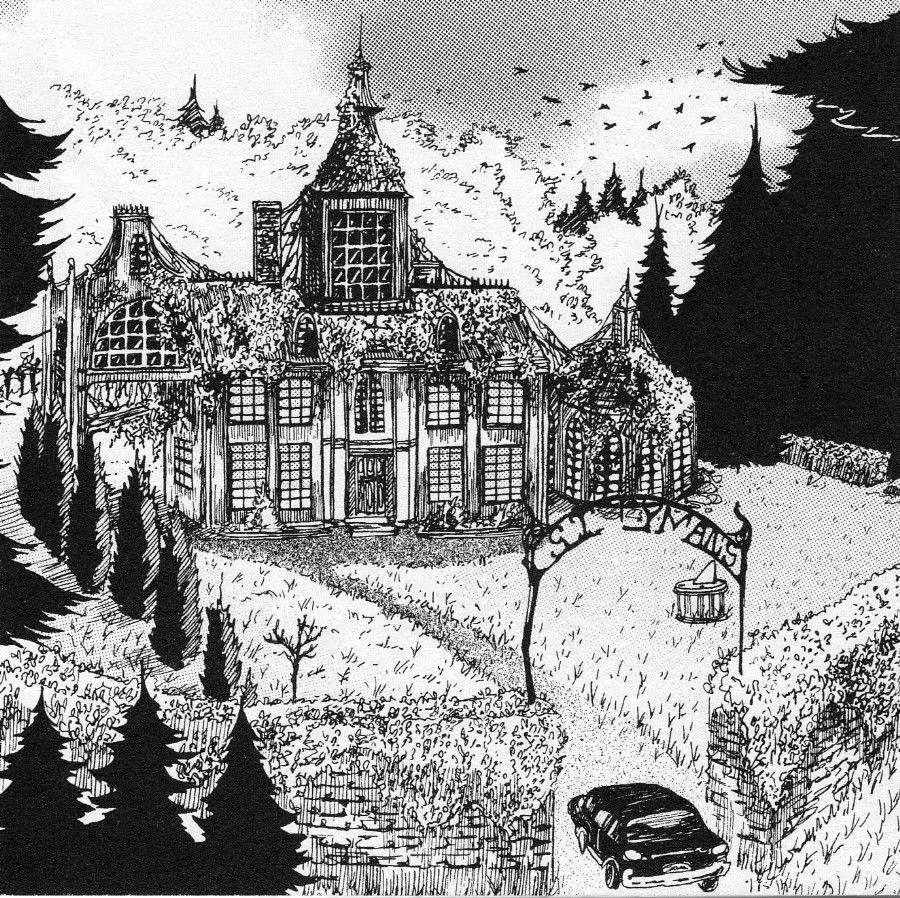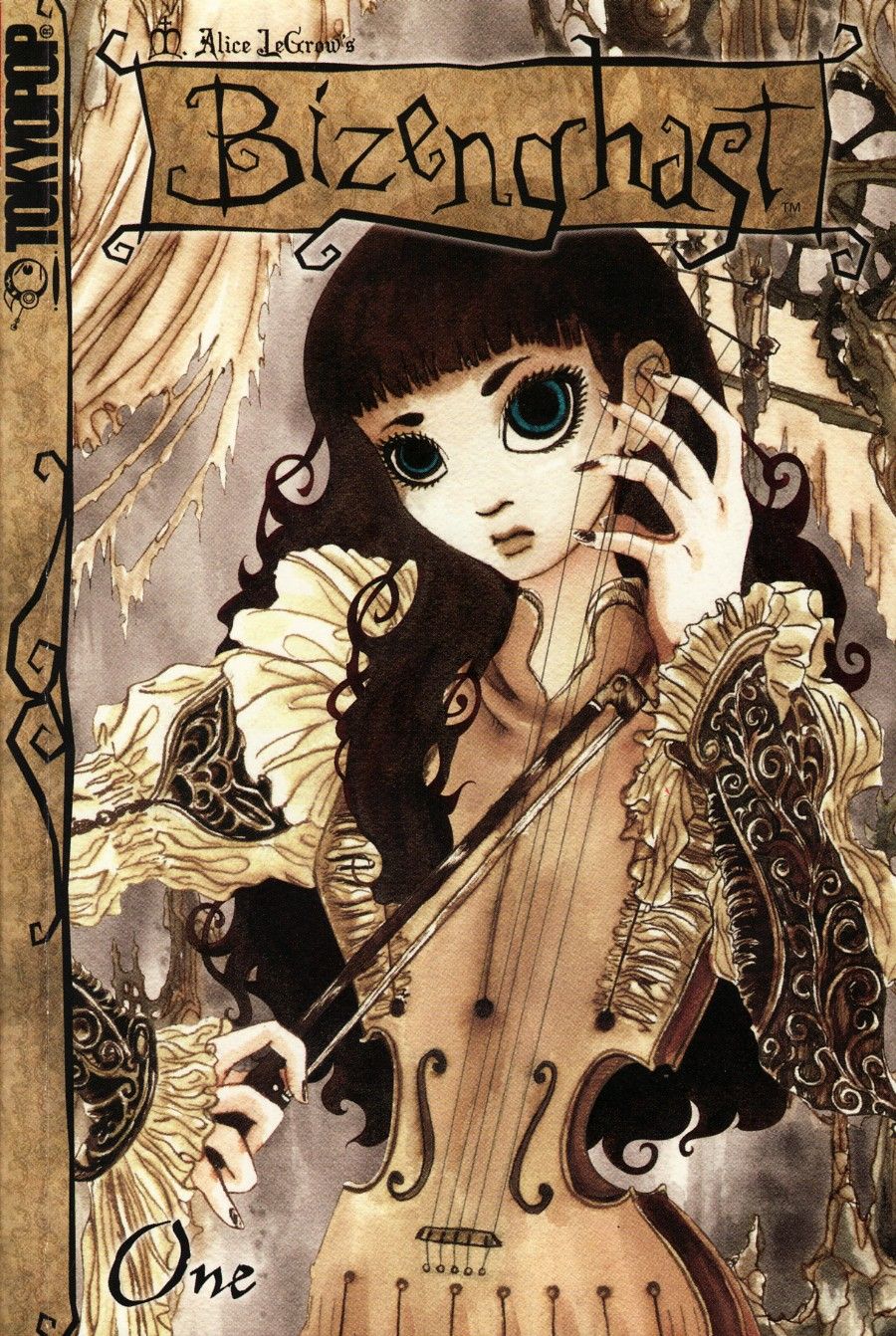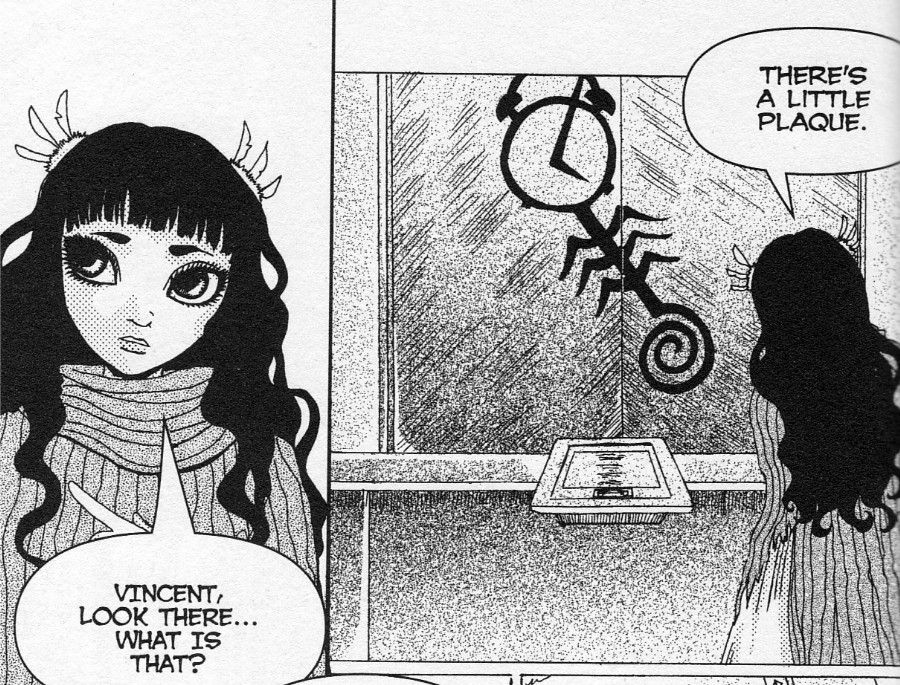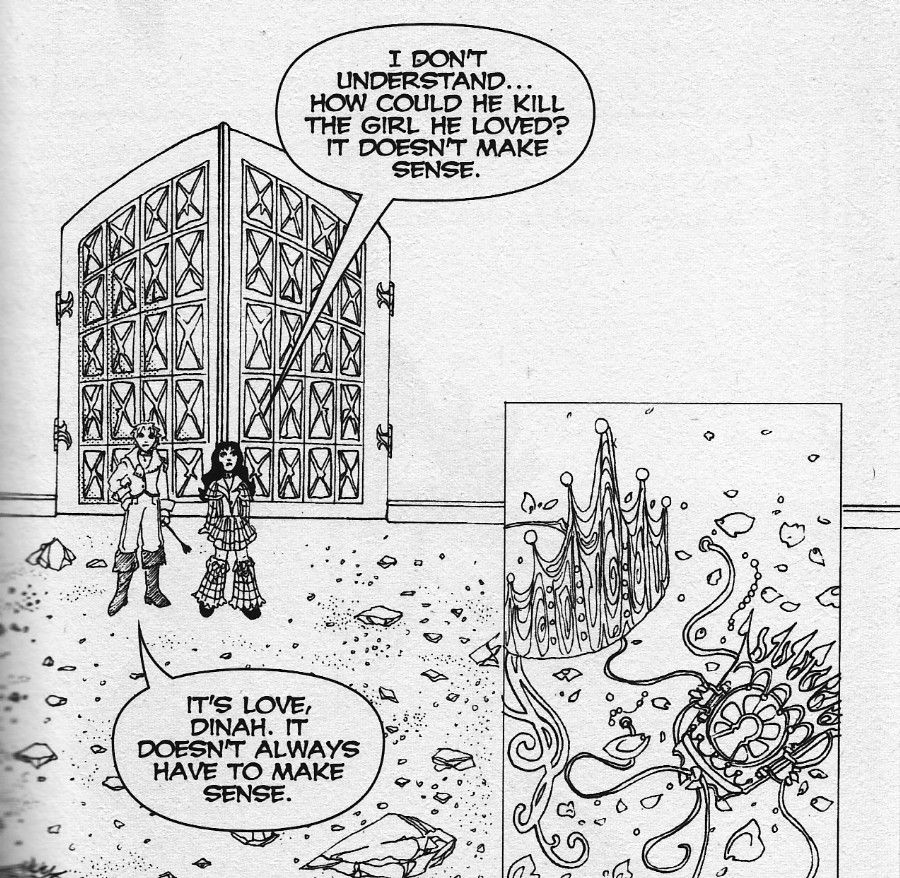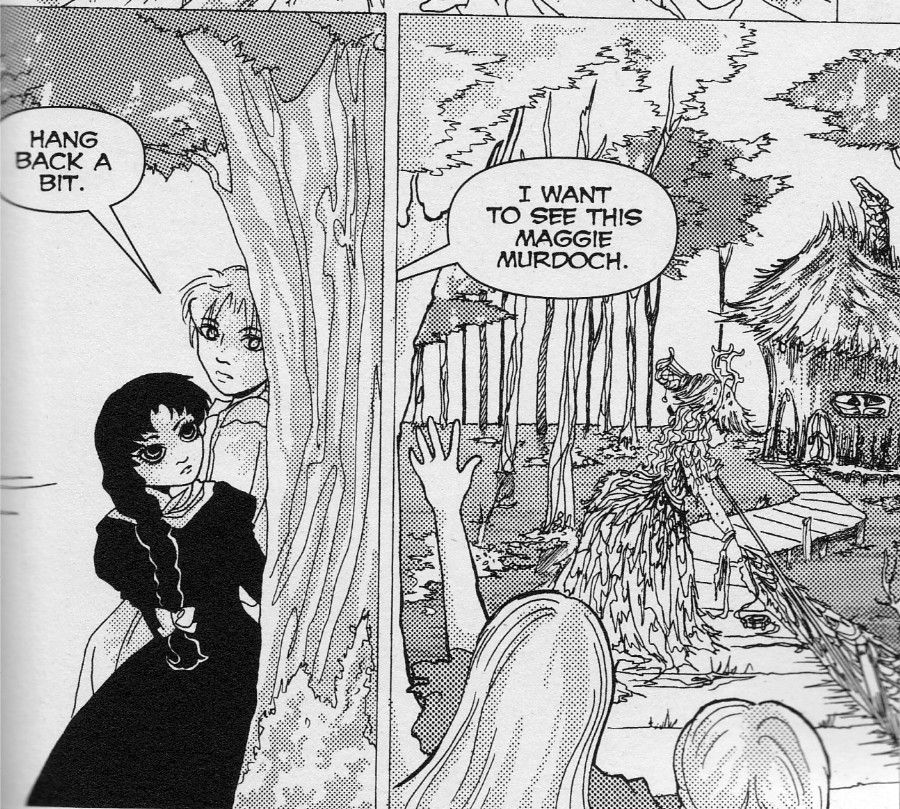Written and Illustrated by M. Alice LeGrow
Tokyopop; $9.99
It was the back cover copy that got me. It promised a young girl, a creepy town, and a “terrifying collection of lost souls that leads her to the brink of insanity.” “The residents of Bizenghast,” it claims, “are just dying to come home.”
Meanwhile, the front cover presents a beautiful, gothic heroine with long, dark hair and an ornate, white dress. She’s got large, expressive eyes, but she looks calm and confident. I wanted to see this lady triumph over ghosts while struggling to keep her mind together in the process. Unfortunately, that’s not exactly the story we get.
I mean, technically it is. And it begins well enough. The first page is a newspaper story in which we learn that Dinah Wherever is an orphan who lives with her aunt in a creepy, former boys’ school called St. Lyman’s. The paper tells us that the aunt stands to inherit a lot of money from her dead sister and brother-in-law, so immediately we’re suspicious. And that’s cool.
What are also cool are LeGrow’s depictions of Bizenghast and St. Lyman’s. Bizenghast looks like a quiet, little, European town. Though we’re told that people live there, it always looks strange and deserted. Sort of like a ghost-town version of Frankenstein Village. St. Lyman’s is crumbling and covered in ivy and a flock of black birds flies over the dense woods behind the school.
Where it goes wrong after the break.
LeGrow is amazing at creating creepy, romantic settings for her stories to take place in. Later, Dinah and her friend Vincent explore the forest and discover a large cemetery with a Byzantine mausoleum at one end. It’s the kind of place you long to find in the middle of dense woods. You could spend hours exploring it. Or even hours just imagining exploring it. And the book is full of these cool, spooky places.
The book also opens with Dinah’s being driven insane by spirits. Her aunt has employed a doctor to come out and check on Dinah periodically, and though he appears to be in collusion with the aunt, he’s also baffled by the cuts and bruises that are constantly appearing on Dinah’s body. He’s unwilling to admit that they’re caused by ghosts – as Dinah claims – but he can’t explain them otherwise either.
The problem is that the story quickly gets away from whatever conspiracy the aunt – and possibly the doctor – is cooking up. It also never comes back to explain Dinah’s injuries. Whatever spirits are or aren’t making Dinah crazy at the beginning are forgotten and replaced by an episodic series of adventures in which Dinah and Vincent have to solve riddles and help ghosts move into the afterlife.
At the mausoleum in the woods, Dinah touches a plaque with a mysterious riddle on it. Doing that somehow obligates her to helping the mausoleum’s haunting spirits into the afterlife. If she doesn’t cooperate, she’ll become one of the disgusting, arachnid-like creatures that guard the place. Vincent, being a good friend, agrees to help her, though he’s not obligated like she is. From here, the book is a series of formulaic escapades as Dinah and Vincent visit tombstones, solve the riddles imprinted on them, and use the solutions to find and help lost souls.
Though the places in which the spirits reside continue to be awesomely atmospheric, the riddles are cutesy and their solutions are too simple to be interesting. For example, one riddle says, “In places of fortune/Will you find the lock.” And sure enough, on the very next page, there’s a lock not-very-well hidden in a sculpture of some shamrocks. (Actually, it looks very well hidden to me, but Vincent finds it so quickly that it must not be. Either way, it’s not very dramatic.) The unlocked door leads to great, Gothic manor where the ghost of a nobleman lives.
A page after they arrive, Dinah and Vincent learn that the nobleman killed himself and his true love when his mother declared that he couldn’t marry her. Dinah frees the spirit by pretending to be the nobleman’s dead love and forgiving him for his murdering her.
We’re told that there are around sixty of these spirits that Dinah has to help before she’s released from her duty, so this could go on for quite a while. During these episodes, we’re reminded of the conflict between Dinah and her aunt, but that’s just a sub-plot that runs in the background. The real story is supposed to be the spirit-rescues, but those tales are over almost before they begin. We get to visit a lot of cool places, but the things that happen in them are unsatisfying.
Also, there’s not much struggling with sanity past the first few pages. If anything, Dinah’s experiences with the mausoleum help make her more sane because she knows for a fact now that the spirits are real. And she has Vincent helping her. And – eventually – a demonic, annoyingly wise-cracking cat, but the less said about him the better. All this help makes Dinah less interesting, not only because she seems to be coping with her duties just fine (all things considered), but also because it allows her to keep playing the victim. Yes, it was totally unfair that she became obligated by touching a plaque (that pisses me off, actually), but she never takes control of the situation. Vincent and the cat do that, so Dinah never becomes the cool, confident woman I thought I saw on the cover.
Three out of five swamp witches.

